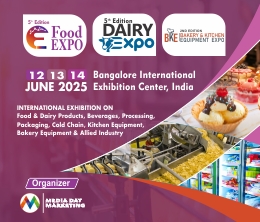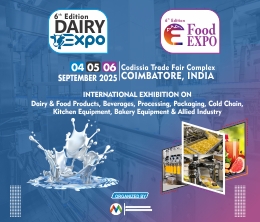Indonesia Ethanol Market (2025-2031) | Trends, Revenue, Forecast, Outlook, Industry, Analysis, Size, Growth, Share & Segmentation
Market Forecast By Purity (Denatured, Non-Denatured), By Sources (Sugar & Molasses Based, Grained Based, Second Generation) By Application (Industrial Solvent, Fuel & Fuel Additives, Beverages, Disinfectant, Personal Care, Others) And Competitive Landscape
| Product Code: ETC003104 | Publication Date: Jul 2020 | Updated Date: Apr 2025 | Product Type: Report | |
| Publisher: 6Wresearch | No. of Pages: 70 | No. of Figures: 35 | No. of Tables: 5 | |
Indonesia Ethanol Market Size Growth Rate
The Indonesia Ethanol Market is likely to experience consistent growth rate gains over the period 2025 to 2029. The growth rate starts at 8.43% in 2025 and reaches 11.77% by 2029.

Ethanol Market: Indonesia vs Top 5 Major Economies in 2027 (Asia)
In the Asia region, the Ethanol market in Indonesia is projected to expand at a growing growth rate of 9.86% by 2027. The largest economy is China, followed by India, Japan, Australia and South Korea.

Indonesia Ethanol Market Highlights
| Report Name | Indonesia Ethanol Market |
| Forecast period | 2025-2031 |
| CAGR | 5.1% |
| Growing Sector | Fuel & Fuel Additives |
Topics Covered in the Indonesia Ethanol Market Report
The Indonesia Ethanol Market report thoroughly covers the market by purity, sources, and applications. The report provides an unbiased and detailed analysis of the ongoing market trends, opportunities/high-growth areas, and market drivers to help stakeholders align their strategies with current and future market dynamics.
Indonesia Ethanol Market Synopsis
Indonesia's ethanol market is experiencing significant growth due to the country's commitment to reducing greenhouse gas emissions and achieving energy self-sufficiency. The government's policies, such as the implementation of ethanol-blended fuels and incentives for bioethanol production, have spurred investments in the sector. The market encompasses various applications, including fuel additives, industrial solvents, beverages, and personal care products. The abundant availability of feedstocks like sugarcane and cassava positions Indonesia favorably for sustained ethanol production.
According to 6Wresearch, the Indonesia Ethanol Market is anticipated to grow at a CAGR of 5.1% during the forecast period 2025-2031. The primary driver of the Indonesia ethanol market is the government's proactive stance on energy diversification and sustainability. Policies mandating the blending of ethanol with gasoline aim to reduce reliance on imported fossil fuels and lower carbon emissions. This regulatory support has created a favorable environment for ethanol producers and has encouraged investments in production facilities. Another significant driver is the availability of diverse feedstocks. Indonesia's rich agricultural landscape offers ample sources for ethanol production, including sugarcane, cassava, and other biomass. This diversity not only ensures a steady supply of raw materials but also provides opportunities for rural development and job creation in farming communities. This trend is reflected in the Indonesia Ethanol Market Growth.
However, the market faces challenges related to feedstock competition and price volatility. The use of food crops for ethanol production raises concerns about food security and can lead to fluctuations in commodity prices. Balancing the demand for ethanol with the need to maintain affordable food supplies remains a critical issue that requires strategic planning and policy intervention. Infrastructure limitations also pose challenges to market expansion. The distribution and storage facilities for ethanol-blended fuels are still developing, particularly in remote regions. Investments in logistics and supply chain infrastructure are essential to ensure the efficient delivery of ethanol products across the archipelago. Additionally, technological constraints in ethanol production processes can impact efficiency and cost-effectiveness. Continuous research and development are necessary to adopt advanced technologies that can enhance production yields and reduce operational costs. Collaborations between research institutions and industry players are vital to drive innovation in this sector.
Indonesia Ethanol Market Trends
A notable trend in the Indonesia ethanol market is the shift towards second-generation biofuels. These biofuels are produced from non-food biomass, such as agricultural residues and waste, addressing concerns over food security and sustainability. The development and commercialization of technologies for second-generation ethanol production are gaining momentum, supported by government incentives and international partnerships.Another emerging trend is the integration of digital technologies in ethanol production and distribution. The adoption of Internet of Things (IoT) devices and data analytics enables producers to monitor processes in real-time, optimize resource utilization, and enhance supply chain transparency. This digital transformation contributes to improved operational efficiency and product quality.
Investment Opportunities in the Indonesia Ethanol Market
The expanding ethanol market in Indonesia presents lucrative investment opportunities, particularly in the development of production facilities utilizing diverse feedstocks. Investors can explore ventures in establishing plants that process not only traditional sources like sugarcane and cassava but also agricultural residues and other biomass for second-generation ethanol. Such investments align with global sustainability goals and can yield substantial returns as demand for renewable energy sources grows.Investments in infrastructure development are also critical. Enhancing storage capacities, transportation networks, and distribution channels for ethanol-blended fuels can address existing logistical challenges. Public-private partnerships in this domain can facilitate the efficient movement of ethanol products, ensuring consistent supply to meet the increasing demand across various regions.
Leading Players in the Indonesia Ethanol Market
Prominent players in the Indonesia ethanol market include PT Energi Agro Nusantara, PT Molindo Raya Industrial, and PT Madusari Nusaperdana. These companies have established significant production capacities and are actively involved in expanding their operations to meet the growing market demand. Their contributions are pivotal in shaping the competitive landscape of the industry.
Government Regulations in the Indonesia Ethanol Market
The Indonesian government has implemented several regulations to promote ethanol production and usage. Presidential Regulation No. 40 of 2023 outlines a roadmap targeting the production of 1.2 million kiloliters of bioethanol by 2030. This regulation emphasizes increasing sugarcane productivity, expanding plantation areas, and improving the efficiency of sugar mills. Additionally, the government provides incentives such as tax exemptions and subsidies to encourage investments in the bioethanol sector.
To address environmental concerns, regulations mandate the adoption of sustainable practices in ethanol production. Producers are required to comply with standards that minimize environmental impact, including proper waste management and reduction of greenhouse gas emissions. These measures ensure that the expansion of the ethanol industry aligns with the country's environmental conservation goals.
Future Insights of the Indonesia Ethanol Market
The Indonesia ethanol market is expected to witness sustained growth, driven by the expansion of ethanol-blended fuel programs. The government’s commitment to increasing the ethanol blend ratio in gasoline is projected to enhance demand for bioethanol, creating opportunities for domestic producers. This initiative aligns with Indonesia’s broader strategy of reducing reliance on fossil fuels and achieving energy security. Technological advancements in ethanol production will further drive market expansion. Investments in modern refining processes, enzyme technology, and fermentation techniques will improve ethanol yields, making production more cost-effective.
As companies adopt these innovations, the overall efficiency and competitiveness of the industry are expected to improve significantly. Consumer preferences are also shifting towards bio-based and sustainable products, leading to increased demand for ethanol in personal care, pharmaceuticals, and disinfectants. The COVID-19 pandemic has accelerated the use of ethanol-based sanitizers and cleaning agents, further fueling growth in these segments. This trend is likely to continue as consumers and industries prioritize hygiene and sustainability.
Market Segmentation Analysis
The report offers a comprehensive study of the following market segments and their leading categories
Denatured Ethanol to Lead the Market – By Purity
According to Ravi Bhandari, Research Head, 6Wresearch, The denatured ethanol segment is expected to dominate the market due to its widespread use in fuel additives, industrial solvents, and disinfectants. The growing adoption of ethanol-blended fuels in Indonesia’s transportation sector is a major factor driving demand for denatured ethanol.
Sugar & Molasses-Based Ethanol to Dominate – By Sources
Ethanol derived from sugar and molasses is projected to lead the market, given Indonesia’s abundant sugarcane production. Government initiatives to increase sugarcane cultivation for bioethanol purposes will further boost the growth of this segment.
Fuel & Fuel Additives Segment to Lead – By Application
The fuel & fuel additives segment is expected to hold the largest market share, driven by government mandates for ethanol blending in gasoline. The increasing focus on reducing carbon emissions and enhancing energy security will continue to support this trend.
Key Attractiveness of the Report
- 10 Years of Market Numbers.
- Historical Data Starting from 2031 to 2024.
- Base Year 2024
- Forecast Data until 2031.
- Key Performance Indicators Impacting the Market.
- Major Upcoming Developments and Projects.
Key Highlights of the Report:
- Indonesia Ethanol Market Outlook
- Market Size of Indonesia Ethanol Market 2024
- Forecast of Indonesia Ethanol Market 2031
- Historical Data and Forecast of Indonesia Ethanol Market Revenues& Volume for the Period 2021-2031
- Indonesia Ethanol Market Trend Evolution
- Indonesia Ethanol Market Drivers and Challenges
- Indonesia Ethanol Market Price Trends
- Indonesia Ethanol Market Porter's Five Forces
- Indonesia Ethanol Market Industry Life Cycle
- Historical Data and Forecast of Indonesia Ethanol Market Revenues & Volume ByPurity for the Period 2021 - 2031
- Historical Data and Forecast of Indonesia Ethanol Market Revenues & Volume By Denatured for the Period 2021 - 2031
- Historical Data and Forecast of Indonesia Ethanol Market Revenues & Volume By Non-Denatured for the Period 2021 - 2031
- Historical Data and Forecast of Indonesia Ethanol Market Revenues & Volume BySources for the Period 2021 - 2031
- Historical Data and Forecast of Indonesia Ethanol Market Revenues & Volume By Sugar & Molasses-Based for the Period 2021 - 2031
- Historical Data and Forecast of Indonesia Ethanol Market Revenues & Volume By Grain-Based for the Period 2021 - 2031
- Historical Data and Forecast of Indonesia Ethanol Market Revenues & Volume By Second Generation for the Period 2021 - 2031
- Historical Data and Forecast of Indonesia Ethanol Market Revenues & Volume ByApplication for the Period 2021 - 2031
- Historical Data and Forecast of Indonesia Ethanol Market Revenues & Volume By Industrial Solvent for the Period 2021 - 2031
- Historical Data and Forecast of Indonesia Ethanol Market Revenues & Volume By Fuel & Fuel Additives for the Period 2021 - 2031
- Historical Data and Forecast of Indonesia Ethanol Market Revenues & Volume By Beverages for the Period 2021 - 2031
- Historical Data and Forecast of Indonesia Ethanol Market Revenues & Volume By Disinfectant for the Period 2021 - 2031
- Historical Data and Forecast of Indonesia Ethanol Market Revenues & Volume By Personal Care for the Period 2021 - 2031
- Historical Data and Forecast of Indonesia Ethanol Market Revenues & Volume By Others for the Period 2021 - 2031
- Indonesia Ethanol Market Import Export Trade Statistics
- Market Opportunity Assessment By Product Type
- Market Opportunity Assessment By Application
- Indonesia Ethanol Market Top Companies Market Share
- Indonesia Ethanol Market Competitive Benchmarking By Technical and Operational Parameters
- Indonesia Ethanol Market Market Company Profiles
- Indonesia Ethanol Market Key Strategic Recommendations
Markets Covered
The report offers a comprehensive analysis of the following market segments
By Purity
- Denatured
- Non-Denatured
By Sources
- Sugar & Molasses-Based
- Grain-Based
- Second Generation
By Application
- Industrial Solvent
- Fuel & Fuel Additives
- Beverages
- Disinfectant
- Personal Care
- Others
Indonesia Ethanol Market (2025-2031): FAQs
| 1. Executive Summary |
| 2. Introduction |
| 2.1 Report Description |
| 2.2 Key Highlights |
| 2.3 Market Scope & Segmentation |
| 2.4 Research Methodology |
| 2.5 Assumptions |
| 3. Indonesia Ethanol Market Overview |
| 3.1 Indonesia Ethanol Market Revenues and Volume, 2021-2031F |
| 3.2 Indonesia Ethanol Market Revenue Share, By Purity, 2021 & 2031F |
| 3.3 Indonesia Ethanol Market Revenue Share, By Source, 2021 & 2031F |
| 3.4 Indonesia Ethanol Market Revenue Share, By Application, 2021 & 2031F |
| 3.5 Indonesia Ethanol Market - Industry Life Cycle |
| 3.6 Indonesia Ethanol Market - Porter’s Five Forces |
| 4. Indonesia Ethanol Market Dynamics |
| 4.1 Impact Analysis |
| 4.2 Market Drivers |
| 4.3 Market Restraints |
| 5. Indonesia Ethanol Market Trends |
| 6. Indonesia Ethanol Market Overview, by Source |
| 6.1 Indonesia Sugar & Molasses Based Ethanol Market Revenues and Volume, 2021-2031F |
| 6.2 Indonesia Grained Based Ethanol Market Revenues and Volume, 2021-2031F |
| 6.3 Indonesia Second Generation Ethanol Market Revenues and Volume, 2021-2031F |
| 7. Indonesia Ethanol Market Overview, by Purity |
| 7.1 Indonesia Ethanol Market Revenue and Volumes, By Denatured, 2021-2031F |
| 7.2 Indonesia Ethanol Market Revenue and Volumes, By Non-Denatured, 2021-2031F |
| 8. Indonesia Ethanol Market Overview, by Application |
| 8.1 Indonesia Ethanol Market Revenue and Volumes, By Industrial Solvent, 2021-2031F |
| 8.2 Indonesia Ethanol Market Revenue and Volumes, By Fuel & Fuel Additives, 2021-2031F |
| 8.3 Indonesia Ethanol Market Revenue and Volumes, By Beverages, 2021-2031F |
| 8.4 Indonesia Ethanol Market Revenue and Volumes, By Disinfectant, 2021-2031F |
| 8.5 Indonesia Ethanol Market Revenue and Volumes, By Personal Care, 2021-2031F |
| 8.6 Indonesia Ethanol Market Revenue and Volumes, By Others, 2021-2031F |
| 9. Indonesia Ethanol Market Key Performance Indicators |
| 10. Indonesia Ethanol Market Opportunity Assessment |
| 10.1 Indonesia Ethanol Market Opportunity Assessment, By Purity, 2031F |
| 10.2 Indonesia Ethanol Market Opportunity Assessment, By Source, 2031F |
| 10.3 Indonesia Ethanol Market Opportunity Assessment, By Application, 2031F |
| 11. Indonesia Ethanol Market Competitive Landscape |
| 11.1 Indonesia Ethanol Market By Companies, 2024 |
| 11.2 Indonesia Ethanol Market Competitive Benchmarking, By Operating Parameters |
| 12. Company Profiles |
| 13. Key Strategic Recommendations |
| 14. Disclaimer |
- Single User License$ 1,995
- Department License$ 2,400
- Site License$ 3,120
- Global License$ 3,795
Search
Related Reports
- Middle East OLED Market (2025-2031) | Outlook, Forecast, Revenue, Growth, Companies, Analysis, Industry, Share, Trends, Value & Size
- Taiwan Electric Truck Market (2025-2031) | Outlook, Industry, Revenue, Size, Forecast, Growth, Analysis, Share, Companies, Value & Trends
- South Korea Electric Bus Market (2025-2031) | Outlook, Industry, Companies, Analysis, Size, Revenue, Value, Forecast, Trends, Growth & Share
- Vietnam Electric Vehicle Charging Infrastructure Market (2025-2031) | Outlook, Analysis, Forecast, Trends, Growth, Share, Industry, Companies, Size, Value & Revenue
- Vietnam Meat Market (2025-2031) | Companies, Industry, Forecast, Value, Trends, Analysis, Share, Growth, Revenue, Size & Outlook
- Vietnam Spices Market (2025-2031) | Companies, Revenue, Share, Value, Growth, Trends, Industry, Forecast, Outlook, Size & Analysis
- Iran Portable Fire Extinguisher Market (2025-2031) | Value, Forecast, Companies, Industry, Analysis, Trends, Growth, Revenue, Size & Share
- Philippines Animal Feed Market (2025-2031) | Companies, industry, Size, Share, Revenue, Analysis, Forecast, Growth, Outlook
- India Lingerie Market (2025-2031) | Companies, Growth, Forecast, Outlook, Size, Value, Revenue, Share, Trends, Analysis & Industry
- India Smoke Detector Market (2025-2031) | Trends, Share, Analysis, Revenue, Companies, Industry, Forecast, Size, Growth & Value
Industry Events and Analyst Meet
Our Clients
Whitepaper
- Middle East & Africa Commercial Security Market Click here to view more.
- Middle East & Africa Fire Safety Systems & Equipment Market Click here to view more.
- GCC Drone Market Click here to view more.
- Middle East Lighting Fixture Market Click here to view more.
- GCC Physical & Perimeter Security Market Click here to view more.
6WResearch In News
- Doha a strategic location for EV manufacturing hub: IPA Qatar
- Demand for luxury TVs surging in the GCC, says Samsung
- Empowering Growth: The Thriving Journey of Bangladesh’s Cable Industry
- Demand for luxury TVs surging in the GCC, says Samsung
- Video call with a traditional healer? Once unthinkable, it’s now common in South Africa
- Intelligent Buildings To Smooth GCC’s Path To Net Zero













